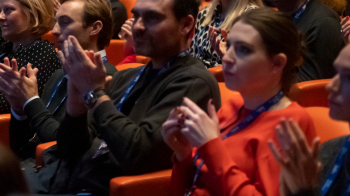How to grab gold in brand safety
Nick Welch
Nick Welch, Business Development Director UK at ADmantX uses the example of the Olympics to showcase how brands can be the number one in terms of brand safety.
Watched by billions of people in over 200 countries and territories worldwide, marketing platforms don’t come much larger than the Olympics, and it’s safe to say there was mixed press coverage around the Games. With its five iconic rings, the Olympic brand is associated with positive universal values such as excellence, friendship, and respect, and the International Olympic Committee (IOC) believes sponsors “benefit from one of the most recognised symbols in the world, which is associated with a set of ideals and values that resonate strongly across the globe.”
But association with the global event doesn’t come cheap – the cost of a four-year cycle as an Olympic Gold partner is thought to be around $200 million. With those sorts of budgets at stake, and the mass exposure advertising linked with the Olympics can bring, sponsors found themselves needing to have robust brand safety strategies in place to ensure their Olympic campaigns won them gold medals in brand awareness, and avoided the risk of generating bad press or damaging their reputation. Rio 2016 was particularly challenging for sponsors, with delayed brand activations in response to security concerns and the chaotic build-up to the event. And in the UK alone there was controversy around the choice of Strongbow for sponsors of Team GB amid fears it would encourage young people to consume alcohol.
So how can advertisers make sure online campaigns are aligned with the positive values of future sporting events, and avoid negative associations that could damage their brands?
Brand safety has two depths; the first a set of broad standard categories to keep brands away from widely accepted inappropriate content using, ‘no porn’, ‘no violence’ filters, and then the second, more robust level which sees brands actively kept away from any content that could be deemed damaging for the brand, product or sector.
Brand safety is easy to get wrong – using keyword filters, probabilistic algorithms, and post-campaign analysis is an outdated and inefficient way of safeguarding the millions spent on brand awareness campaigns associated with major sponsorship deals. A keyword, let’s say the word Visa, has many multiple meanings – it could relate to the financial services brand, yet it can also relate to a permit used to enter a country. You’d have to question why an Olympic sponsor would want to have a mobile ad placed on an article discussing whether Brits will need a visa to enter the EU post-Brexit - this would provide no added value to the operator as the context is completely wrong. Equally Swiss watch manufacturer Omega would have had little interest in appearing on an article about the health benefits of fatty acids.
While some ad placements can simply be a waste of money due to the irrelevance of the content on the page, they can also have sinister implications. If long-standing Olympic sponsors Samsung targeted Rio 2016 advertising at keywords such as ‘Brazil’ or ‘athletics’ they could easily find their messaging served alongside content about the Zika epidemic, the Russian doping scandal or the US swimmer controversy.
For brand safety to effectively safeguard against these irrelevant and potentially damaging examples, page-level content must be read and understood as a human would. Semantic technology combined with Natural Language Processing allows marketers to analyse individual pages in detail – including grammar and the relationships between words. By pulling out the key themes, sentiment, and emotion elicited in content, decisions can be made in real-time to determine whether the environment is suitable for the ad.
Brand safety must evolve in line with the sophistication of programmatic ad trading and be tailored to the individual product, industry, and brand values so that a precise understanding rather than a ‘best guess’ of all URL content is achieved.
With the mass exposure generated by a global event like the Olympic Games, there is always an inherent risk of negative associations. But by leveraging innovative brand safety technologies to gain an in-depth understanding of ad placements and context, that risk can be minimised and advertisers can ensure their budgets are used to best effect to align their messaging with the positive values of the Olympic brand. For sponsors and brand safety, it’s not too early to be planning for Tokyo 2020.
Related content
Q&A: A responsible approach to brand safety
Learn moreDespite GARM’s setback, look to Team GB cyclists to keep collaboration on track
Learn moreIAB UK reinforces the Gold Standard with new updates
Learn moreFAQs: Find out more about getting Gold Standard certified
Learn more
Rediscover the joy of digital advertising
Champion connections instead of clicks. Capture audiences' imaginations, not just their attention. Boldly find your own beat instead of letting tech set the pace. It’s time to rediscover the joy of digital.



